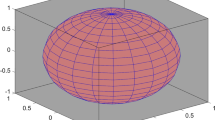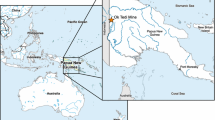Abstract
The large number of input factors involved in a sophisticated geotechnical computational model is a challenge in the concept of probabilistic analysis. In the context of model calibration and validation, conducting a sensitivity analysis is substantial as a first step. Sensitivity analysis techniques can determine the key factors which govern the system responses. In this paper, three commonly used sensitivity analysis methods are implemented on a sophisticated geotechnical problem. The computational model of a compressed air energy storage, mined in a rock salt formation, includes many input parameters, each with large amount of uncertainties. Sensitivity measures of different variables involved in the mechanical response of the cavern are computed by different global sensitivity methods, namely, Sobol/Saltelli, Random Balance Design, and Elementary Effect method. Since performing sensitivity analysis requires a large number of model evaluations, the concept of surrogate modelling is utilised to decrease the computational burden. In the following, the accuracy levels of various surrogate techniques are compared. In addition, a comparative study on the applied sensitivity analysis methods shows that the applied sensitivity analysis techniques provide identical parameter importance rankings, although some may also give more information about the system behaviour.









Similar content being viewed by others
References
Khaledi K, Mahmoudi E, Datcheva M, Schanz T (2016) Stability and serviceability of underground energy storage caverns in rock salt subjected to mechanical cyclic loading. Int J Rock Mech Min Sci 86:115–131
Sternik K (2017) Elasto-plastic constitutive model for overconsolidated clays. Int J Civ Eng 15:431–440
Cacuci DG (2003) Sensitivity and uncertainty analysis, volume 1: theory. CRC Press, Boca Raton
Schanz T, Zimmerer MM, Datcheva M, Meier J (2006) Identification of constitutive parameters for numerical models via inverse approach. Felsbau 24(2):11–21
Hamm N, Hall J, Anderson M (2006) Variance-based sensitivity analysis of the probability of hydrologically induced slope instability. Comput Geosci 32(6):803–817
Mollon G, Dias D, Soubra A-H (2013) Range of the safe retaining pressures of a pressurized tunnel face by a probabilistic approach. J Geotech Geoenviron Eng 139:1954–1967
Miro S, Hartmann D, Schanz T (2014) Global sensitivity analysis for subsoil parameter estimation in mechanized tunneling. Comput Geotech 56:80–88
Bérest P, Brouard B (2003) Safety of salt caverns used for underground storage. Oil Gas Sci Technol 58:361–384
Mahmoudi E, Khaledi K, von Blumenthal A, König D, Schanz T (2016) Concept for an integral approach to explore the behavior of rock salt caverns under thermo-mechanical cyclic loading in energy storage systems. Environ Earth Sci 75:1069
Ratigan WR, Hannum WD (1980) Mechanical behavior of new mexico rock salt in triaxial compression up to 200 c. J Geophys Res 85:891–900
Sane S, Desai C, Jenson J, Contractor D, Carlson A, Clark P (2008) Disturbed state constitutive modeling of two pleistocene tills. Quatern Sci Rev 27:267–283
Ma L-J, Liu X-Y, Wang M-Y, Xu H-F, Hua R-P, Fan P-X, Jiang S-R, Wang G-A, Yi Q-K (2013) Experimental investigation of the mechanical properties of rock salt under triaxial cyclic loading. Int J Rock Mech Min Sci 62:34–41
Hölter R, Mahmoudi E, Schanz T (2015) Optimal sensor location for parameter identification in soft clay. AIP conference proceedings, vol 1684
Hölter R, Zhao C, Mahmoudi E, Lavasan AA, Datcheva M, König M, Schanz T (2018) Optimal measurement design for parameter identification in mechanized tunneling. Undergr Space. ISSN 2467-9674. https://doi.org/10.1016/j.undsp.2018.01.004
Rocquigny E, Devictor N, Tarantola S (2008) Uncertainty in industrial practice: a guide to quantitative uncertainty management. Wiley, Oxford
Saltelli A, Chan K, Scott EM (2000) Sensitivity analysis, vol 134. Wiley, New York
Cukier RI, Fortuin CM, Schuler KE, Petschek AG, Schaibly JH (1973) Study of the sensitivity of coupled reaction systems to uncertainties in rate coefficients, I theory. J Chem Phys 59(8):3873–3878
Sobol’ IM (1993) Sensitivity estimates for nonlinear mathematical models. Math Modell Comput Exp 1:407–414 (English translation of russian original paper Sobol’ (1990))
Chan K, Saltelli A, Tarantola S (1997) Sensitivity analysis of model output: variance-based methods make the difference. In: Proceedings of the 29th conference on Winter simulation, IEEE Computer Society, pp 261–268
Tarantola S, Gatelli D, Mara T (2006) Random balance designs for the estimation of first order global sensitivity indices. Reliab Eng Syst Saf 91(6):717–727
Saltelli A, Tarantola S, Chan KPS (1999) A quantitative model-independent method for global sensitivity analysis of model output. Technometrics 41(1):39–56
McKay MD (1997) Nonparametric variance-based methods of assessing uncertainty importance. Reliab Eng Syst Saf 57(3):267–279
Saltelli A (2002) Making best use of model evaluations to compute sensitivity indices. Comput Phys Commun 145(2):280–297
Saltelli A, Andres T, Ratto M (2008) Global sensitivity analysis. The primer. Wiley, Oxford
Marzban S, Lahmer T (2016) Conceptual implementation of the variance-based sensitivity analysis for the calculation of the first-order effects. J Stat Theory Pract 10(4):589–611
Dimov I, Georgieva R (2010) Monte carlo algorithms for evaluating Sobol’ sensitivity indices. Math Comput Simul 81:506–514
Koda M, Mcrae GJ, Seinfeld JH (1979) Automatic sensitivity analysis of kinetic mechanisms. Int J Chem Kinet 11(4):427–444
Iman RL, Hora SC (1990) A robust measure of uncertainty importance for use in fault tree system analysis. Risk Anal 10(3):401–406
Mara TA (2009) Extension of the rbd-fast method to the computation of global sensitivity indices. Reliab Eng Syst Saf 94(8):1274–1281
Satterthwaite FE (1959) Random balance experimentation. Technometrics 1(2):111–137
Nguyen-Tuan L, Lahmer T, Datcheva M, Schanz T (2017) Global and local sensitivity analyses for coupled thermo-hydro-mechanical problems. Int J Numer Anal Meth Geomech 41(5):707–720
Saltelli A, Andres T, Homma T (1993) Sensitivity analysis of model output. Comput Stat Data Anal 15(2):211–238
Homma T, Saltelli A (1996) Importance measure in global sensitivity analysis of nonlinear models. Reliab Eng Syst Saf 52(12):1–17
Khaledi K, Mahmoudi E, Datcheva M, König D, Schanz T (2016) Sensitivity analysis and parameter identification of a time dependent constitutive model for rock salt. J Comput Appl Math 293:128–138
Hamby DM (1994) A review of techniques for parameter sensitivity analysis of environmental models. Environ Monit Assess 32(2):135–154
Morris MD (1991) Technometrics, factorial sampling plans for preliminary computational experiments. Taylor & Francis Ltd., Routledge
Campolongo F, Cariboni J, Saltelli A (2007) An effective screening design for sensitivity analysis of large models. Modelling, computer-assisted simulations, and mapping of dangerous phenomena for hazard assessment. Environ Modell Softw 22(10):1509–1518
Hunsche U, Hampel A (1999) Rock salt—the mechanical properties of the host rock material for radio active waste repository. Eng Geol 52:271–291
Mahmoudi E, Khaledi K, Miro S, König D, Schanz T (2017) Probabilistic analysis of a rock salt cavern with application to energy storage systems. Rock Mech Rock Eng 50(1):139–157
Desai C, Zhang D (1987) Viscoplastic model for geologic material with generalized flow rule. Int J Numer Anal Meth Geomech 11:603–627
Lancaster P, Salkauskas K (1981) Surfaces generated by moving least squares methods. Math Comput 37(155):141–158
Hardy RL (1971) Multiquadric equations of topography and other irregular surfaces. J Geophys Res 76(8):1905–1915
Buljak V (2010) Proper orthogonal decomposition and radial basis functions algorithm for diagnostic procedure based on inverse analysis. FME Trans 38:129–136
Buljak V (2012) Inverse analysis with model reduction: proper orthogonal decomposition in structural mechanics. Springer, Berlin
Khaledi K, Miro S, König M, Schanz T (2014) Robust and reliable metamodels for mechanized tunnel simulations. Comput Geotech 61:1–12
Mullur AA, Messac A (2006) Metamodeling using extended radial basis functions: a comparative approach. Eng Comput 21(3):203–217
McKay M, Beckman R (1979) A comparison of three methods for selecting values of input variables in the analysis of output from a computer code. Technometrics 21:235–239
Sobol’ IM, Myshetskaya EE (2007) On sensitivity estimation for nonlinear mathematical models. Monte Carlo Methods Appl 13(5–6):455–465
Acknowledgements
The Authors would like to gratefully acknowledge the support of the German Research Foundation (DFG) through the Collaborative Research Center SFB 837 (subproject C2).
Funding
German Research Foundation (DFG)-The Collaborative Research Center SFB 837 “Interaction models for mechanized tunneling”.
Author information
Authors and Affiliations
Corresponding author
Rights and permissions
About this article
Cite this article
Mahmoudi, E., Hölter, R., Georgieva, R. et al. On the Global Sensitivity Analysis Methods in Geotechnical Engineering: A Comparative Study on a Rock Salt Energy Storage. Int J Civ Eng 17, 131–143 (2019). https://doi.org/10.1007/s40999-018-0302-3
Received:
Revised:
Accepted:
Published:
Issue Date:
DOI: https://doi.org/10.1007/s40999-018-0302-3




